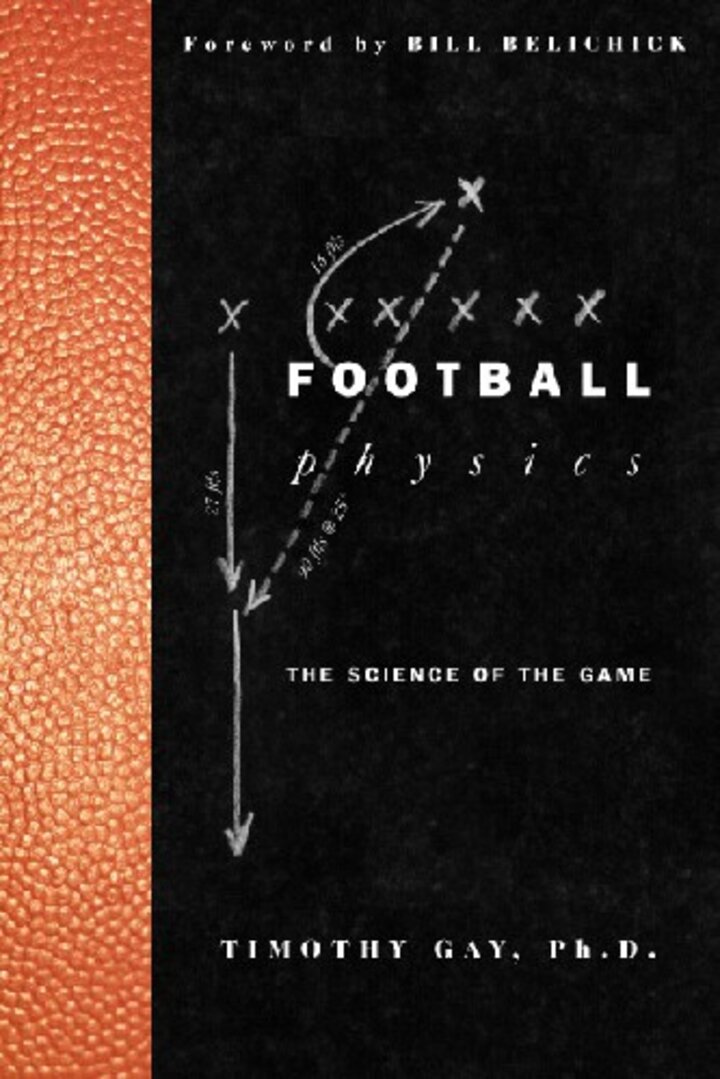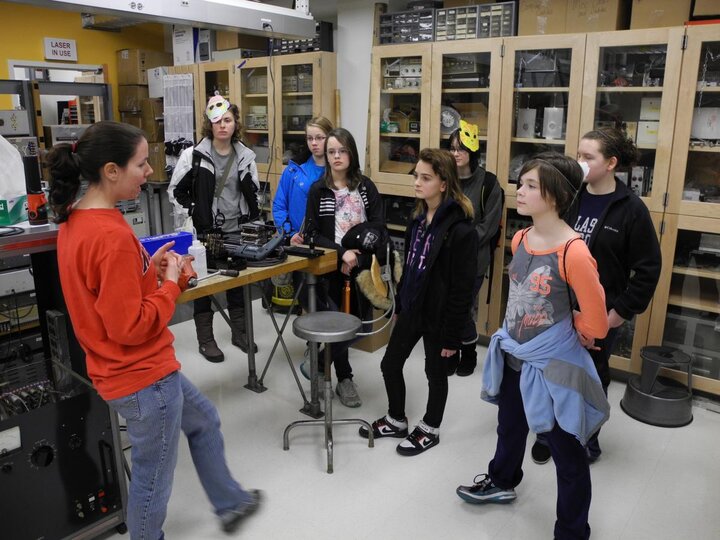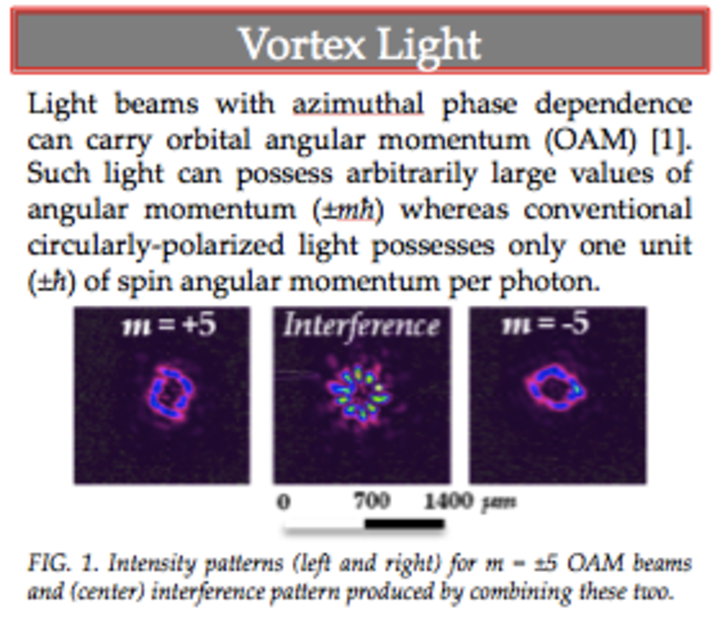Football Physics
Read all about it!

This is the snazzy-looking cover of Dr. Gay's new book.
It is a heartbreaking work of staggering genius, and available in a bookstore near you!

Learn all about football physics and download the videos at Dr. Gay's Football Physics Website.
More Outreach

After visiting Dr. Gay's class, these girls from a 6th grade engineering program listen to Joan give a talk and a tour of the lab.

Dr. Gay delivers a speech to the St. Louis Rams, whose cheerleaders reward him with his very own jersey!
Interview With a. . . Nate Clayburn
Interviewer: Good evening, fine sir. Tell me, what astounding outreach activities were you involved in this year (2011)?
Nate: I was one of the presenters at the "AAPT Advanced and Intermediate Laboratories Workshop" this year. Since it happened to be held in nearby Omaha they asked for a number of local presenters (mostly because we could drive our big heavy experiments instead of having to fly them). The goal of the workshop was to give the participants some interesting new labs they could take back to their respective universities and have students do.
Interviewer: Fascinating, simply fascinating. What did you present?
Nate: I presented an experiment entitled "Investigation of Vortex Light Produced by Diffraction Gratings." This example lab was written by myself and Nick Ryan.

Interviewer: You scoundrel, dropping names like that! Tell me more about this lab.
Nate: I'll just give you an excerpt from the experimental abstract: "In this experiment we will study light with orbital angular momentum. Circularly polarized light possesses spin angular momentum, analogous to Earth's rotation about its axis. Orbital angular momentum (OAM) of light is analogous to Earth's orbit around the Sun, with a structure explained below. We will generate beams with OAM by passing laser light through specially designed diffraction gratings. By constructing an interferometer and interfering the OAM beam with a reference plane wave, we can determine the magnitude and direction of the beam's orbital angular momentum."
Interviewer: Oh my. It's.. it's just so.. *faints from all the pure exhilarating brilliance*